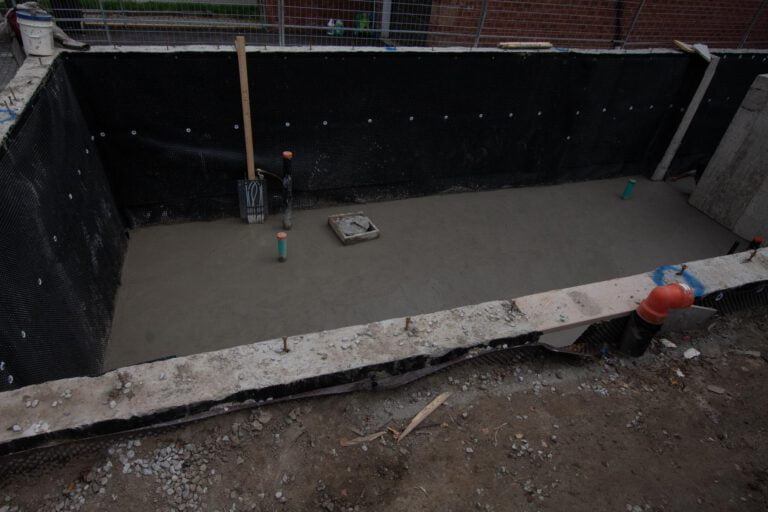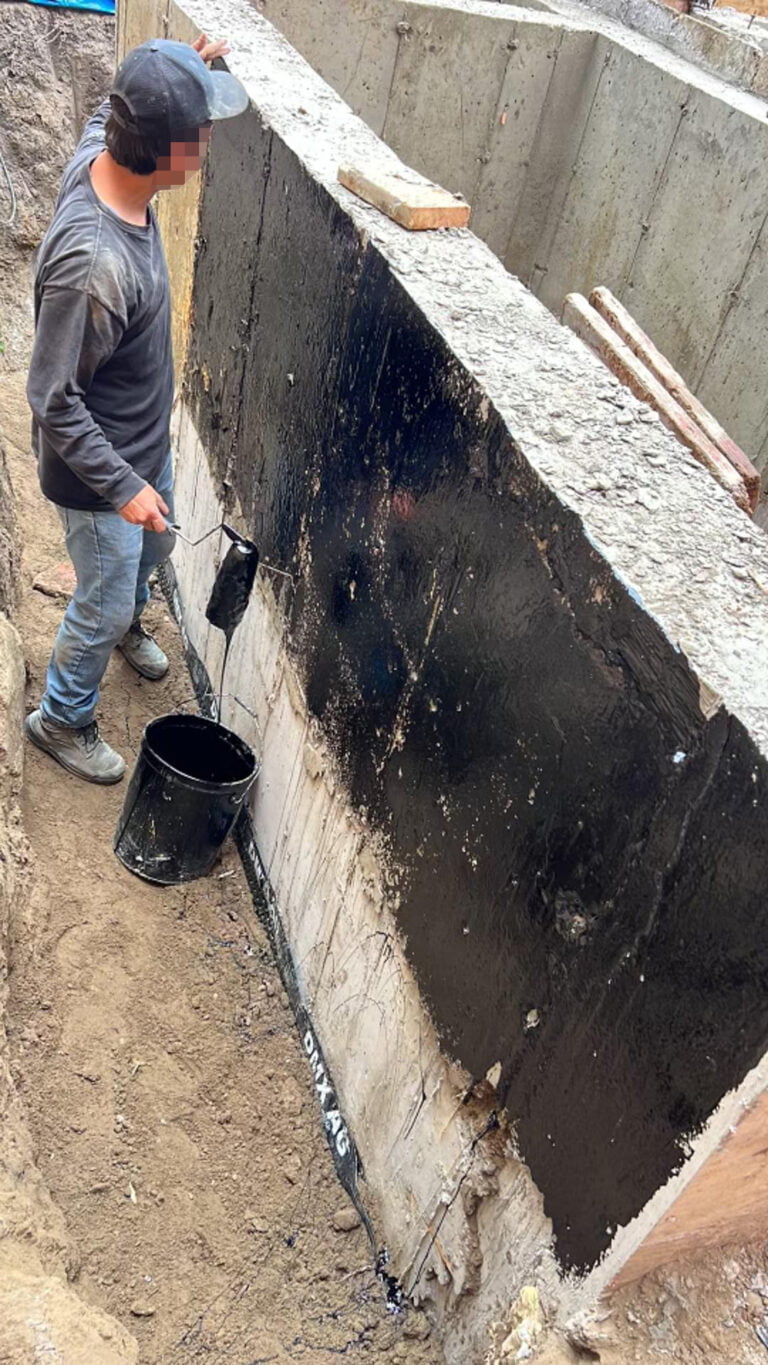Waterproofing
At GRND we also offer waterproofing as part of your project.
The waterproofing procedure involves sealing the walls of a structure, building or home to make it water-resistant, which leaves it almost impervious to any water damage.
It can be used for building structures, like basements, roofs and decks, where resistance to water damage is important.
Waterproofing can be accomplished by applying a waterproof coating to the structure or by installing an impermeable barrier.
Free Quote
If you have any questions or would like more information.
Please don’t hesitate to contact us.
Why you should apply waterproofing
The main reasons you should apply waterproofing are, that water can:
- Cause serious damage to a structure, leading to expensive repairs or even total collapse.
- Create an ideal environment for mold and mildew to grow, which can cause health problems for building occupants.
- Can make a structure unsightly and difficult to maintain.
Types of waterproofing products
When choosing a waterproofing product, it is important to consider the specific needs of the structure, as well as the climate in which it is located. Waterproofing products that are designed for use in cold climates may not be effective in warm climates and vice versa. It is also important to read the manufacturer’s instructions carefully before applying any waterproofing product.
Waterproof paints and coatings
Waterproof paints and coatings are applied to the surface of a structure to create a barrier against water. They are normally made from latex or rubber, and may be applied with a brush, roller or sprayer.
Waterproof paints and coatings are typically less expensive than other types of waterproofing products, but they must be reapplied regularly to maintain their effectiveness.
Waterproof membranes
Waterproof membranes are impermeable sheets that are installed on the surface of a structure to create a barrier against water.
They are typically made from PVC or TPO and can be applied with a roller or sprayer.
Waterproof membranes are more expensive than waterproof paints and coatings, but they last longer and require less maintenance

Waterproof sealants
Waterproof sealants are applied to joints and cracks in a structure to prevent water from leaking through.
Generally, these are made from silicone or urethane, a brush or roller can be used to apply them. Waterproof sealants are less expensive than waterproof membranes, but they must be reapplied regularly to maintain their effectiveness.

Waterproof systems
Waterproofing systems are composed of multiple products that work together to create a barrier against water. They are typically used on commercial and industrial buildings, and can be customized to meet the specific needs of the structure.
Waterproofing systems are more expensive than other types of waterproofing products, but they are the most durable and require the least amount of maintenance.
The difference between waterproofing and damp proofing
Damp proofing is the process of making a structure resistant to moisture, while waterproofing is the process of making a structure resistant to water. It is generally used on walls and floors, while waterproofing is typically used on roofs and basements. Damp proofing is less expensive than waterproofing, but it does not provide as much protection against water damage.
Contact us at GRND for your waterproofing solution
If you have any questions about waterproofing, or if you would like to schedule a free consultation, please contact us at GRND today.
Our team of experts would be glad to help you choose the best waterproofing structural support solution for your needs or add it as part of your overall demolition project.
